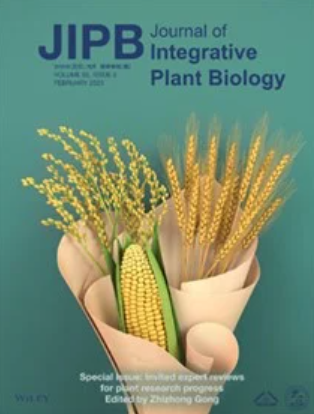TabHLH489 suppresses nitrate signaling by inhibiting the function of TaNLP7-3A in wheat
Abstract
Nitrate not only serves as the primary nitrogen source for terrestrial plants but also serves as a critical signal in regulating plant growth and development. Understanding how plant responses to nitrate availability is essential for improving nitrogen use efficiency in crops. Herein, we demonstrated that the basic helix-loop-helix (bHLH) transcription factor TabHLH489 plays a crucial negative regulatory role in wheat nitrate signaling. Overexpressing TabHLH489 significantly reduced nitrate-promoted wheat growth and grain yield. Transcriptomic analysis showed that approximately 75% of nitrate-responsive genes were no longerregulated by nitrate in the TabHLH489 overexpression lines. TabHLH489 directly interacts with TaNLP7-3A, the wheat homolog protein of NIN-like protein 7 (NLP7), a central transcription factor in nitrate signaling. This interaction impairs TaNLP7-3A's ability to bind DNA, thereby inhibiting its transcriptional activity. Moreover, TabHLH489 induces the accumulation of reactive oxygen species (ROS) to reduce the nuclear localization of TaNLP7-3A, thereby diminishing its effectiveness in regulating the plant nitrogen response. These findings highlight the intricate regulatory mechanism by which TabHLH489 modulates TaNLP7-3A activity through direct interaction and ROS-mediated inhibition of nuclear localization. Our research highlights the critical roles of TabHLH489 and TaNLP7-3A in modulating nitrate signaling, providing new gene targets for developing wheat varieties with enhanced nitrogen use efficiency.

 求助内容:
求助内容: 应助结果提醒方式:
应助结果提醒方式:


